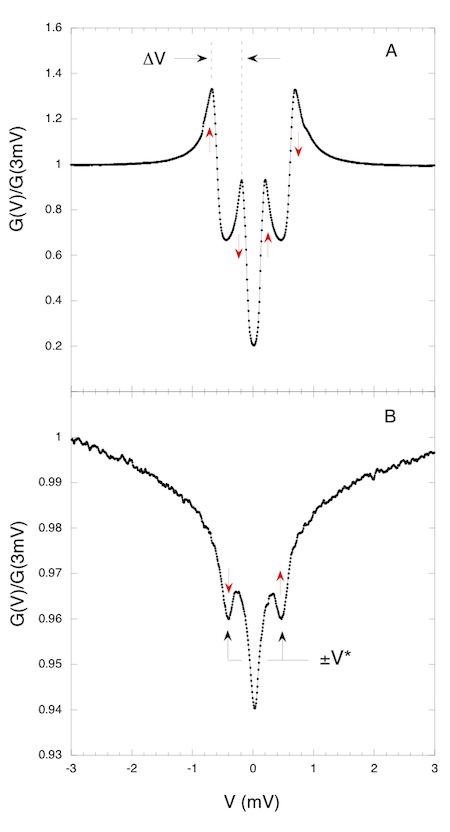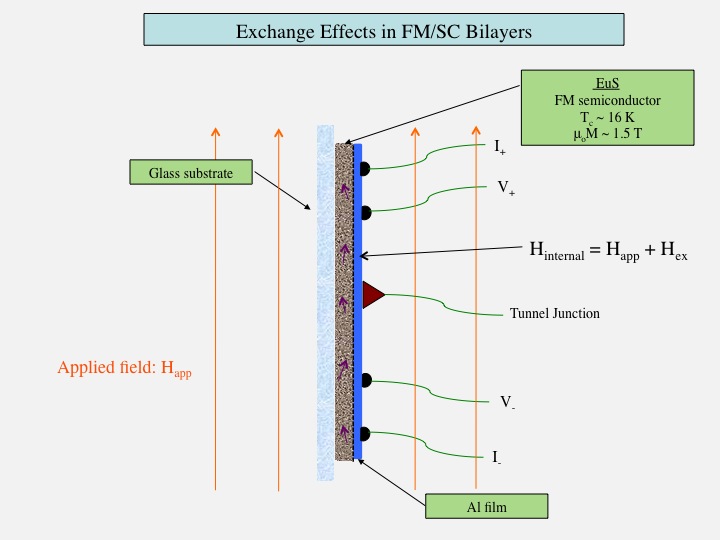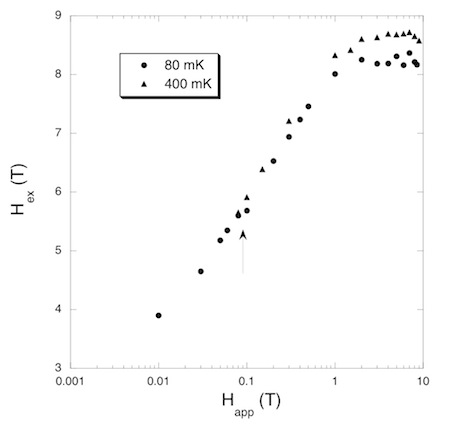
In these experiments use spin-resolved electron tunneling to study the exchange field in the Al component of EuS/Al bilayers, in both the superconducting and normal-state phases of the Al. A typical bilayer geometry is shown below. The EuS layer is ferromagnetic and insulating, with its the easy magnetization direction in the plane of the film. Contrary to expectation, we have found that the exchange field Hex is a nonlinear function of applied field, even in applied fields that are well beyond the EuS coercive field. Furthermore, the magnitude Hex is unaffected by the superconducting phase. Interestingly, Hex decreases significantly with increasing temperature in the range of 0.1 - 1 K.
In the plot on the left, panel (A) shows the tunneling DOS spectrum in an
applied parallel field of 0.03 T for a EuS/Al bilayer, where we are tunneling into the Al. The Zeeman splitting of the
coherence peaks gives a direct measure of the internal field. The
red arrows denote the spin assignment of the coherence
peaks. The separation of these peaks is proportional to the internal field. For this sample the internal field was dominated by Hex ~ 4 T. In Panel (B) we show the spectrum for the Pauli-limited normal state in an applied parallel field of
0.1 T. In this case the Al is in the normal state and only the Pairing Resonance and the zero-bias
anomaly remain. The internal field can be extracted from the
resonance energy V*. The red arrows denote the
spin assignments of the occupied and unoccupied resonances.


On the left we show a semilog plot of the EuS-induced exchange field in the Al film as a function of parallel applied field. The arrow denotes the superconducting critical field for the 80 mK data. All of the 400 mK were obtained from normal-state spectra using the Pairing Resonance. Note that the Hex varies as ln(Happ), even in applied fields that are well above the parallel coercive field of the EuS underlayer which is less than 0.005 T. The origin of this field dependence is not known.
Read more...Proximity-Induced Exchange in EuS/Al Bilayers
Very recently we have been using a gate electric field to modulate the strength of the exchange field. This "3-terminal" device is the potential basis of a superconducting field effect transistor. Specifically, we can use a gate voltage to push the internal magnetic field of the Al layer back and forth across the superconducting critical field transition. Thereby, switching the superconducting state "on" and "off".
Read more...Electrostatic Tuning of the Exchange Field in EuS/Al Bilayers
: